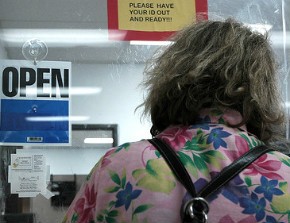The 16 percent
A record number of Americans are poor. And by any measure, the poverty rate is rising.

In November, the Census Bureau released its new Supplemental Poverty Measure, according to which there are 49.1 million poor people in the U.S.—2.9 million more than were counted using the official formula. The official poverty rate is 15.1 percent for 2010, whereas the SPM puts it at 16 percent. Some criticized the SPM as an ideological stunt, while others praised it as more accurate than the standard measure. Whatever gauge is used, however, poverty is on the rise—it's been going up since 2007 and is at its highest rate since 1993.
The alternate numbers help illumine the specific contours of poverty. The official poverty threshold is based on food prices and income, whereas the SPM looks also at other household expenses and at government assistance with food, housing and energy bills. The SPM uncovers some additional poor people, many of them seniors with high out-of-pocket medical expenses. Child poverty, however, turns out to be lower under the SPM, because a lot of government programs are aimed at families with children. At current levels, these programs alleviate child poverty, though they fall far short of eliminating it.
Federal poverty numbers determine eligibility for the services designed to lift people out of poverty, and they track overall progress toward achieving this. The point is not to debate which number to use, nor to discuss whether the current poverty rate is acceptable—it isn't. Poverty is measured in order to fight it.





